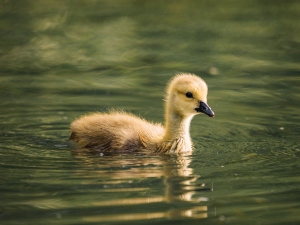
If you’re planning on hatching a large number of ducklings then setting up incubators and brood boxes is a must. Making sure you track how long the birds have been in the incubator is also a must.
Generally, eggs from mallard ducks take about 28 days to hatch. But, what if duckling hatches too early? This article looks into it
Table of Contents
Duckling hatched too early:
Egg laying and hatching are what drive duck populations. Some ducks will sit and lay on their eggs pretty well and the eggs will hatch in good time, but some eggs won’t hatch in good time. In fact, some ducklings will hatch too early.
Hatching duck eggs is pretty similar to hatching chicken eggs, with some slight differences. The incubation period may be different, but some settings, like the temperature and the humidity, are similar.
Here are reasons why your duckling may have hatched too early:
High incubation temperature
The correct temperature to hatch duck eggs is 99.5˚F or 37.5˚C. Too low temperatures during incubation can lead to a late hatch and too high temperatures during incubation can lead to too early of a hatch.
If the temperatures throughout incubation are too high then this can also kill the developing embryos in the egg. In addition, inconsistent incubation temperatures can lead to the uneven development of the duck embryo.
What to do:
It is very crucial to keep a constant temperature inside the incubator throughout the incubation of the duck eggs. Make sure that the incubator temperature settings are kept at 99.5˚F or 37.5˚C, no more, no less.
In addition, you also need to make sure that you keep the incubator away from drafts and direct sunlight.
Once you set the temperature of the incubator to 99.5˚F or 37.5˚C, you’d need to keep a close eye on it so that it does not fluctuate.
Home incubators may not be as precise as commercial ones so it is very important that you keep an eye on these machines.
Too high humidity:
Humidity is one of the most important incubator settings when it comes to duck hatching, it determines when the ducklings will hatch and also the health of the ducklings that hatch.
The correct humidity level for duck legs is 84.5˚F (on a wet bulb thermometer) or 55%.
Too high humidity levels can cause ducklings to hatch too early. Moreover, too high humidity levels can also result in the ducklings drowning in the shell or ducklings hatched with unhealed and rough navels.
On the other hand, too low humidity levels can cause ducklings not to hatch out of their shells at all.
What to do?
To avoid too high humidity levels during incubation, you’d need to follow the instructions provided by the incubator manufacturer.
Make sure that the humidity levels in the incubator are kept at 84.5˚F (on a wet bulb thermometer) or at 55% at all times.
Just as with the temperature settings, you’d need to make sure that you keep an eye on the humidity levels in the incubator as at-home incubators may fluctuate during incubation.
Make sure the water tray never dries out while incubating and avoid having too much of a damp atmosphere in the incubator.
What to do with a premature duckling?
Everybody wants to hatch healthy ducklings, but unfortunately, you may hatch a premature duckling, these premature ducklings usually come with some serious complications.
When a duck hatches prematurely it may hatch with its yolk sac outside of its body. The yolk sac being stepped on can be dangerous for the bird. You’d need to take special care of this bird.
Start off by placing the bird in a makeshift incubator using a cardboard box and a warm light globe to keep the bird warm. You can also keep the bird warm by holding it close to your body to share your body heat.
Ducklings that are born on time will be sustained by the yolk but ducklings that are premature will need to be fed as soon as they hatch. This is especially true if the egg yolk has not been fully absorbed into the bird’s body.
You can give the bird some sugar water, the bird may be weak so you’d need to hold this under the bird’s beak so that the bird can drink out of it.
If the bird accepts this water you can feed the bird more solid foods. Grind up some chick starter, add room temperature water to soften it up, and feed this to your bird.
When it’s time for bed, place the bird in a makeshift nest using a cardboard box, some towels as padding on the floor, and a tea towel. Place the bird under the tea towel to mimic being under its mother’s feathers.
If you enjoyed this article then you may also be interested in other duck related articles. Here are some articles that you may be interested in: Waterlogged Duckling, How To Clean Duck Poop From Grass, How To Train Ducks To Go In At Night, Waterlogged Duckling Symptoms

